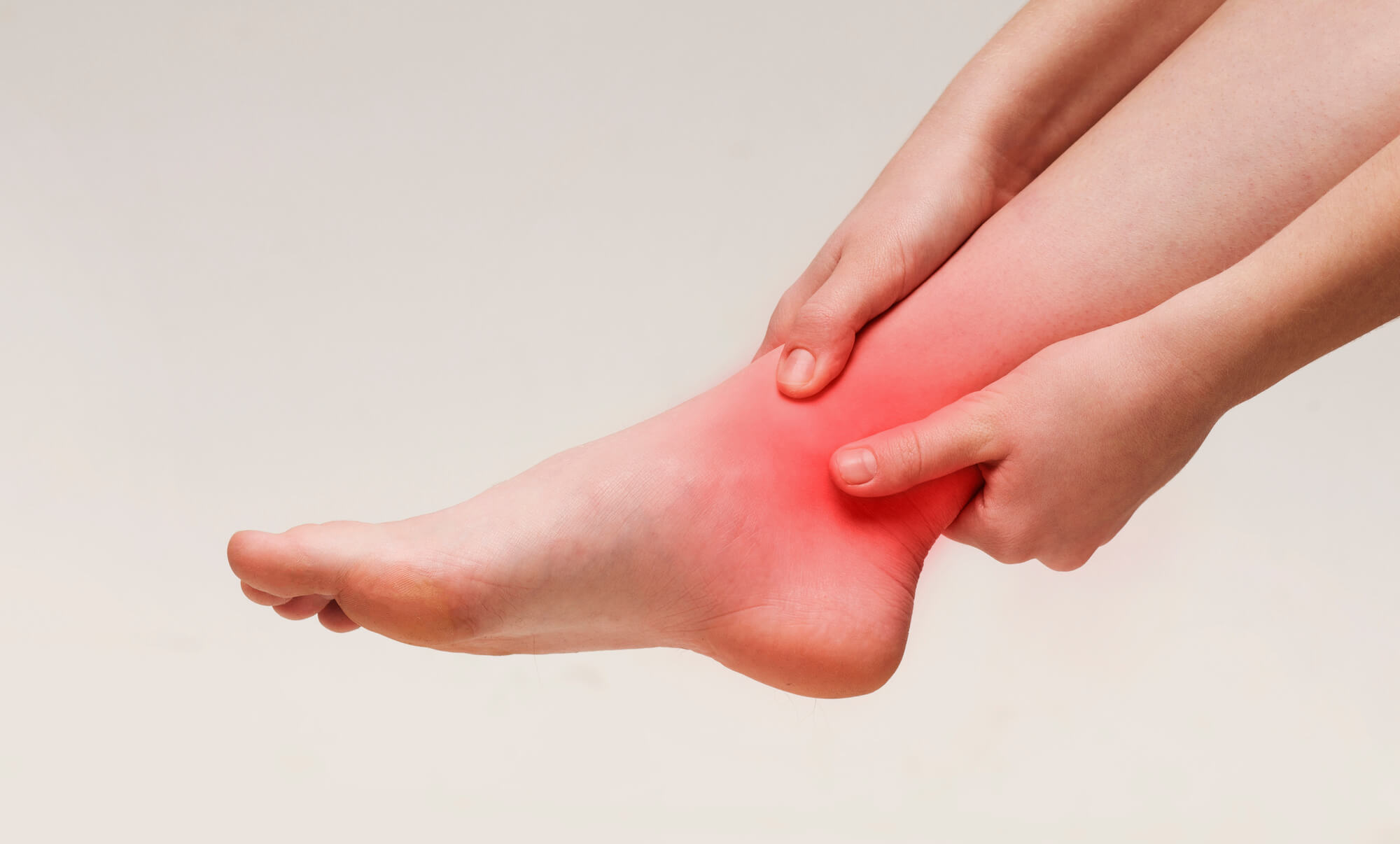Ankle Pain When Running: Causes, Symptoms & Treatment
As a runner, experiencing ankle pain can be a frustrating and painful experience that can impact your running ability. Ankle pain is a common issue among runners and can be caused by various factors, from overuse injuries to sprains and fractures. This article will explore the causes, symptoms, and treatment options, helping you understand how to identify and manage the pain to get back to pain-free running.
Common Causes of Ankle Pain When Running
Ankle pain is often caused by overuse injuries or ankle sprains, which can damage the ligaments in the ankle joint. Common causes include:
Overuse Injuries
Overuse injuries are a common cause among runners. These injuries occur when the foot and ankle are subjected to repetitive stress and strain, leading to microtrauma in the muscles, tendons, and ligaments. Overuse injuries can cause pain and discomfort in the ankle and swelling and tenderness around the ankle joint. Some common overuse injuries include:
- Achilles Tendinitis: Inflammation of the Achilles tendon, which connects the calf muscle to the heel bone and can cause pain at the back of the heel and ankle.
- Peroneal Tendinitis: Inflammation of the peroneal tendons, which run along the outside of the ankle and can cause pain and discomfort when running.
- Posterior Tibial Tendinitis: Inflammation of the posterior tibial tendon, which runs along the inside of the ankle and can cause pain and discomfort around the joint.

Sprains and Strains
Ankle sprains and strains are another common cause. These injuries occur when the ligaments and tendons in the ankle are stretched or torn, causing pain and swelling around the ankle joint. Some common types of ankle sprains and strains include:
- Inversion Ankle Sprain: This occurs when the foot is turned inward, causing the ligaments on the outside of the ankle to stretch or tear.
- Eversion Ankle Sprain: This occurs when the foot is turned outward, causing the ligaments on the inside of the ankle to stretch or tear.
- High Ankle Sprain: This occurs when the ligaments that connect the tibia and fibula bones in the lower leg are stretched or torn, causing pain and instability around the joint.
Stress Fractures
Stress fractures are small cracks or breaks in the foot and ankle bones, often caused by overuse and repetitive strain. Stress fractures can cause pain and tenderness around the ankle joint, swelling, and difficulty walking or running.
Symptoms of Ankle Pain When Running
The symptoms of ankle pain when running can vary depending on the underlying cause. Some common symptoms include:
- Pain and tenderness in the ankle joint
- Swelling and inflammation around the ankle
- Difficulty walking or running
- Instability or weakness
- Limited range of motion in the ankle
- Clicking or popping sounds when moving the ankle
- Bruising around the ankle

Diagnosing Ankle Pain When Running
If you are experiencing ankle pain when running, seeing a foot and ankle specialist or podiatrist is important for a proper diagnosis. Your doctor will perform a physical exam of the foot and ankle, checking for swelling, tenderness, and instability in the ankle. They may also order imaging tests, such as an X-ray or MRI, to assess the extent of the damage and identify any stress fractures or other injuries.
Treating Ankle Pain When Running
Treatment will depend on the underlying cause. In general, treatment options include:
Rest and Ice
Resting and icing the ankle can help reduce pain and inflammation and is often the first treatment for ankle pain from running. You should avoid running or other activities aggravating your pain and apply ice to the affected area for 15-20 minutes at a time, several times daily.
Compression and Elevation
Compression and elevation can help reduce swelling and improve blood flow to the affected area, promoting healing. You can use a compression bandage to wrap the ankle and elevate the foot and ankle above heart level to help reduce swelling.
Physical Therapy
Physical therapy can help strengthen the muscles and tendons in the ankle, improving stability and reducing the risk of future injuries. Your physical therapist can develop a customized exercise program to help you recover and prevent future injuries.
Medications
Anti-inflammatory medications, such as ibuprofen, can help reduce pain and inflammation in the ankle. Your doctor may also recommend corticosteroid injections to reduce swelling and pain, although these are generally reserved for more severe cases.
Bracing and Orthotics
A brace or orthotic can help support the ankle and reduce the risk of further injury. A podiatrist can recommend an appropriate brace or orthotic based on the underlying cause of your ankle pain.
Surgery
In more severe cases of ankle pain from running, surgery may be required to repair damaged ligaments or tendons or remove bone fragments or spurs causing pain and inflammation.

Preventing Ankle Pain When Running
Preventing ankle pain when running requires taking steps to reduce the risk of injury and improve the strength and flexibility of the ankle. Some tips for preventing include:
Choosing the Right Running Shoes
Wearing the right running shoes is essential for reducing the risk. You should choose shoes that provide good support, and cushioning, and fit properly to prevent rubbing and blisters.
Gradual Progression
Gradually increasing the intensity and duration of your running can help reduce the risk of overuse injuries, such as stress fractures and tendinitis. You should aim to increase your mileage by no more than 10% per week to avoid overuse injuries.
Stretching and Strengthening
Stretching and strengthening exercises can help improve the flexibility and strength of the ankle joint, reducing the risk of injury. You should include exercises that target the calf muscles, Achilles tendon, and the muscles around the ankle.
Using Proper Technique
Proper running techniques can help reduce ankle joint strain and the risk of injury. You should aim to land on the midfoot rather than the heel and keep your knees slightly bent to absorb impact.
Wearing a Brace or Orthotic
Wearing a brace or orthotic can help support the ankle and reduce the risk of injury. You should wear a brace or orthotic if you have a history of ankle injuries or are experiencing ankle pain when running.

When to See a Podiatrist
If you are experiencing persistent or severe ankle pain when running, seeing a podiatrist or foot and ankle specialist is important for a proper diagnosis and treatment plan. You should also see a podiatrist if you have any signs of ankle instability, such as recurrent ankle sprains or the feeling of the ankle giving way.
Conclusion
Ankle pain when running is common among runners, but it can be effectively managed with the right diagnosis and treatment plan. By understanding the causes and symptoms, you can take steps to prevent and treat the pain, allowing you to get back to pain-free running. It's important to see a podiatrist or foot and ankle specialist if you are experiencing persistent or severe ankle pain, as this can be a sign of a more serious injury that requires medical attention.
If you are a runner, taking steps to prevent should be a priority. By wearing the right shoes, using proper technique, and gradually increasing the intensity and duration of your running, you can reduce the risk of ankle injuries and enjoy pain-free running. If your ankles hurt when running, taking steps to rest, ice, and compress the affected area can help reduce pain and inflammation and allow the ankle to heal.
By working with a podiatrist or foot and ankle specialist, you can develop a customized treatment plan for your pain, incorporating a range of treatment options, from physical therapy and medication to bracing and surgery. With the right treatment plan, you can manage ankle pain when running and return to doing what you love without discomfort or pain.

